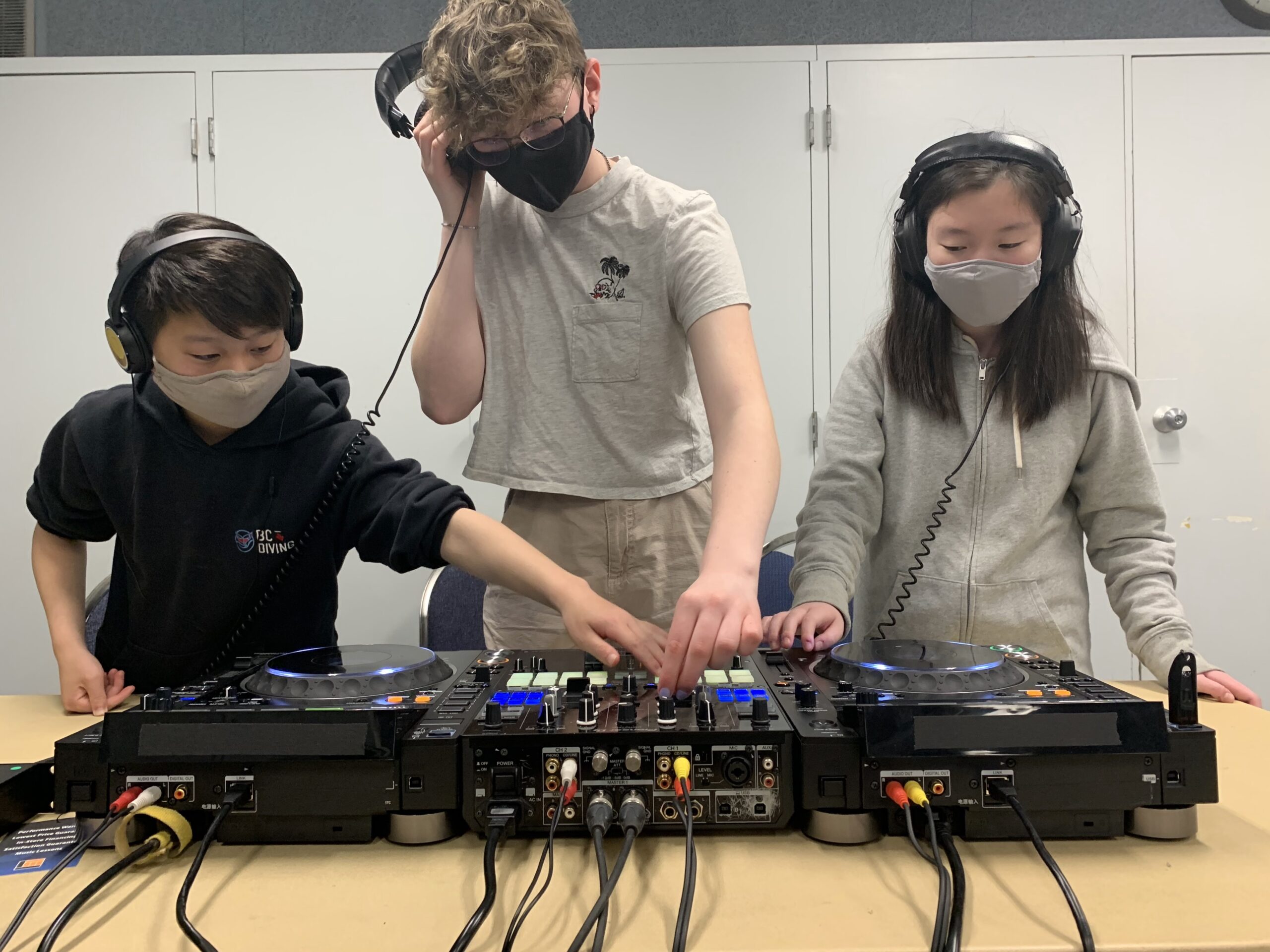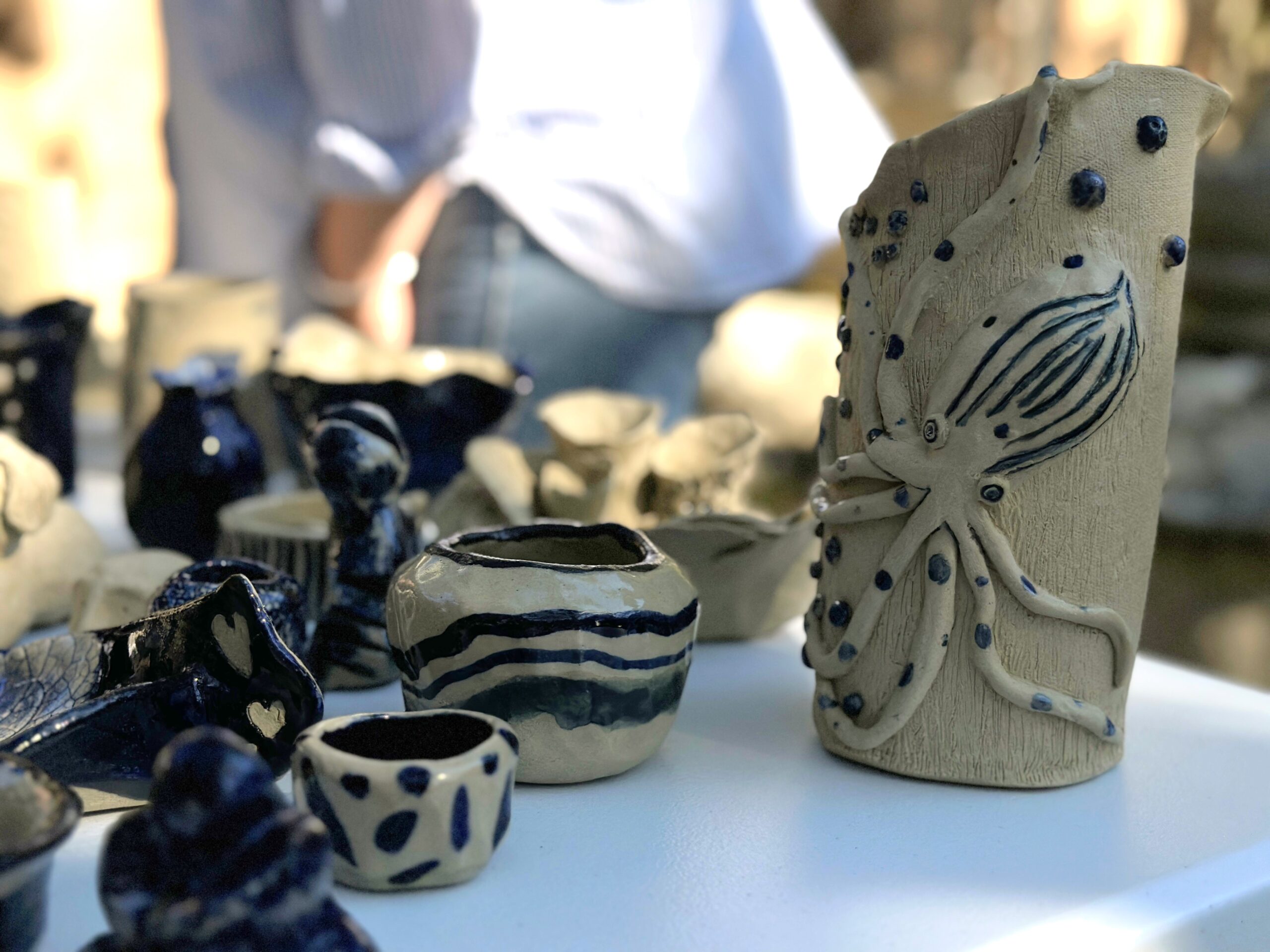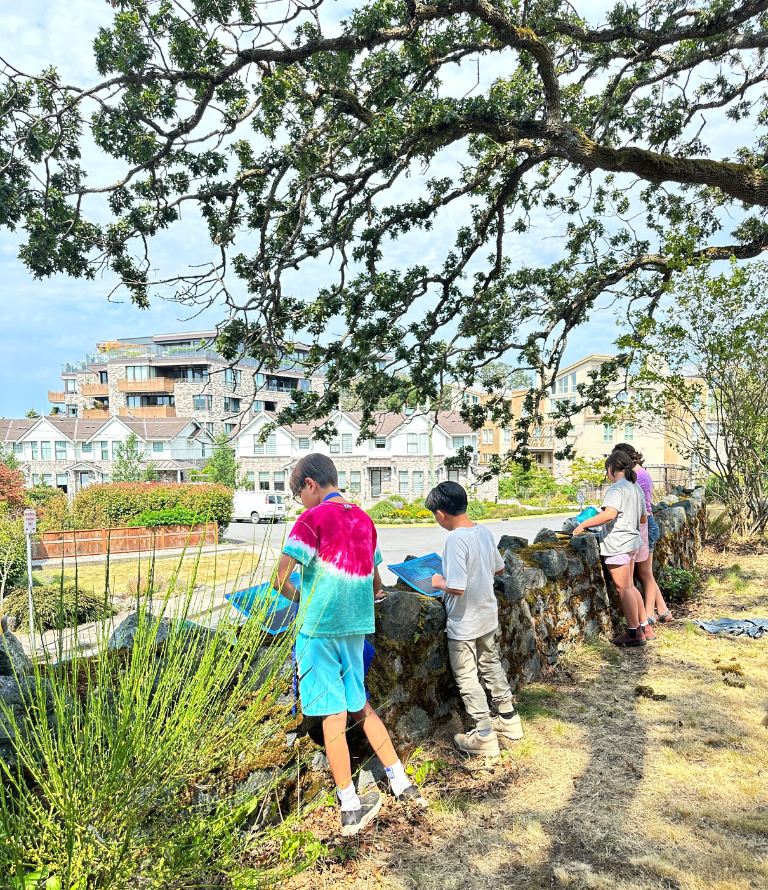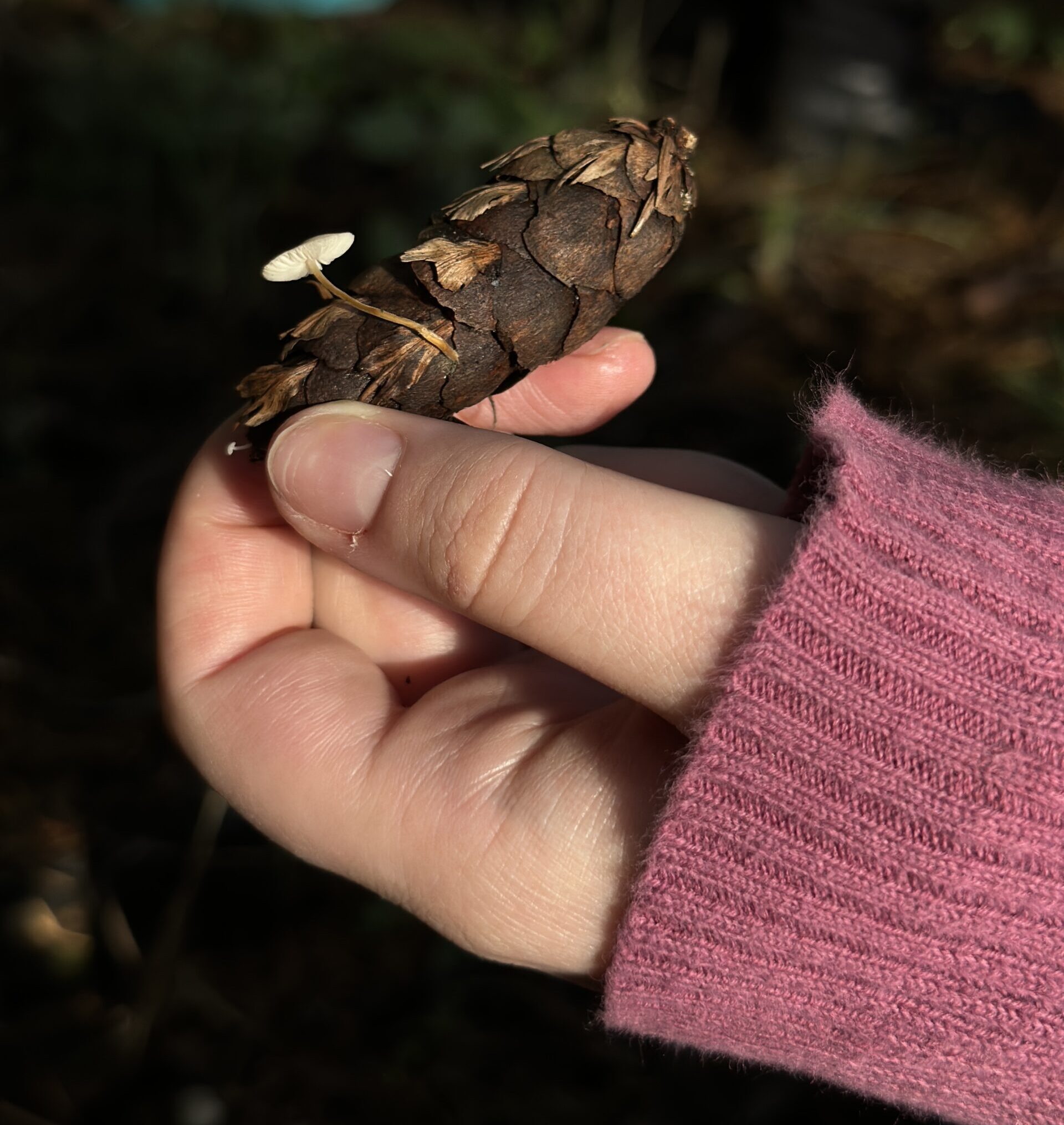By Emilia, Izze, Kate, Ishaan, Taylor, and Lillian, students. Photo credits: Mr Mazza.
Over the course of eight weeks, our music exploratory class of 8th grade students at Arbutus Global Middle School have been working in partnership with the Art Gallery of Greater Victoria on a DJ workshop under the guidance of Tera, also known as DJ Nova Jade. We went from not knowing that “DJ” is derived from “Disc Jockey”… to setting up and using professional equipment, learning about the components of songs, and how to manipulate (or mix) music we enjoy. Hence, to start, each student chose three songs to use during this workshop, which were then downloaded onto USBs. These songs varied greatly in style; from nursery rhymes to Lady Gaga to Chinese rap.
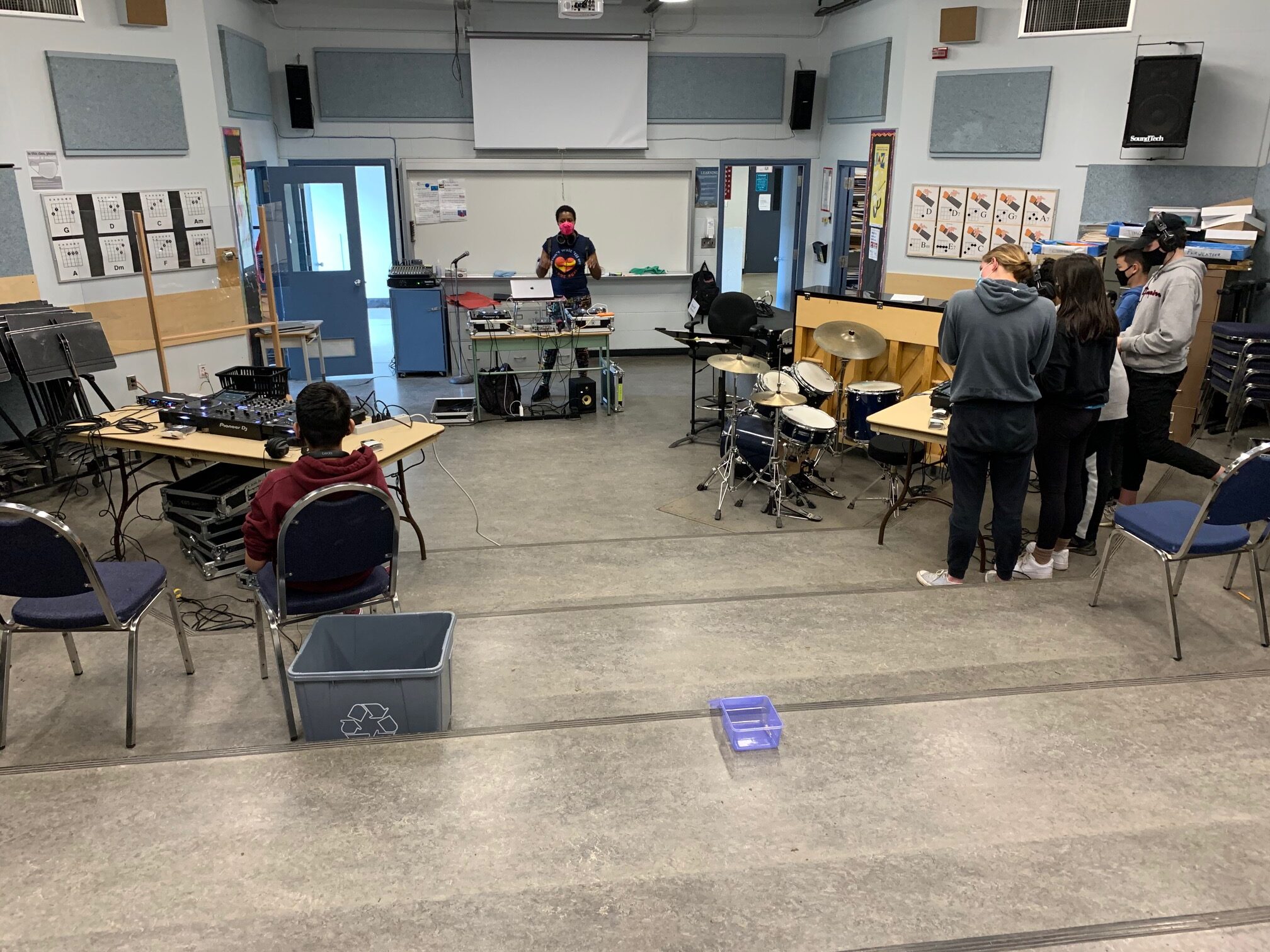 DJ Nova Jade and Arbutus music students DJ’ing together!
DJ Nova Jade and Arbutus music students DJ’ing together!
Learning to set up the equipment was difficult due to the many intricate cables, cords and units involved. However, with Tera’s help we eventually had music coming out of our headphones, connected to a mixer and pair of CDJs. Within a few classes, we were setting up on our own in just about fifteen minutes!
Before going into how to manipulate music using the DJ sets, we focused on what to listen for when analyzing a song. Tera taught us a pattern corresponding with the background beats; every certain number of bars/measures (typically 4, 8, 12, or 16), there is a change in the form of a song. We were shown how to find that distinct moment (the “one”), whether identified by the crash of a cymbal or new vocals, and how to mark it with the cue button for later reference. Students commented that “I found the counting strategy helped me feel the beat of the song and really get into it.” and “Tera talked about how knowing how to count was something they carried over from the flute. That was interesting for me because it kind of helped build a bridge between regular music and DJing.”. What ties into this is the discussion we had on the difference between passive, emotional, and active listening; the latter being critical in DJing. Tera also shared three must-haves to be a DJ: a love for music, a love for people, and the importance of flexibility, which correlates with having a positive mindset (not just in DJing, everywhere!).
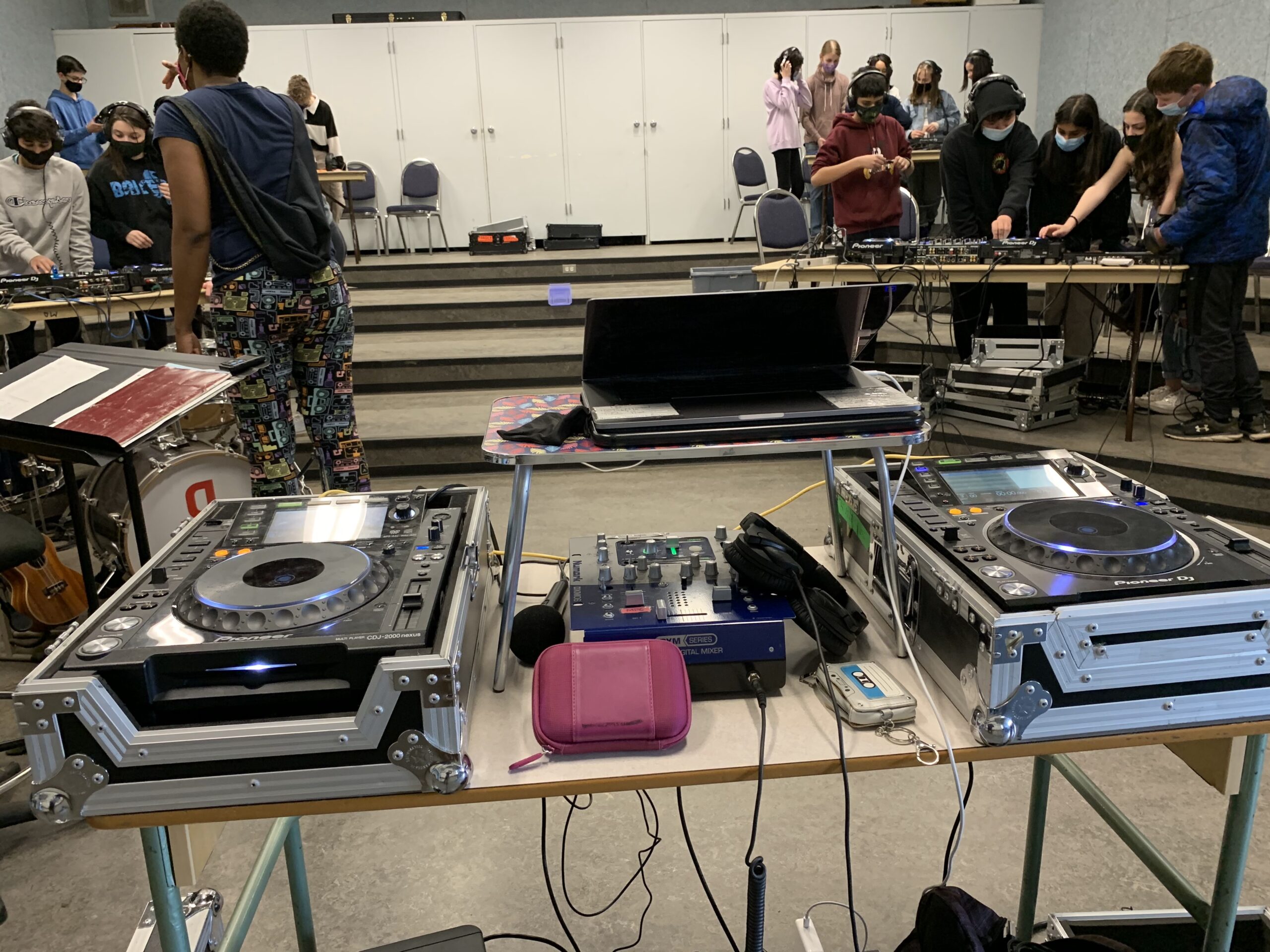 Students set up equipment independently in their assigned groupings.
Students set up equipment independently in their assigned groupings.
Next on cue was one the most important parts of DJing, what makes every performance unique: mixing the music! There were many different ways and tools on our mixers to aid in manipulating the sound: knobs, buttons and faders to control pitches, volume, rhythm, overall sound and much more. “I am greatly enjoying this […] I can’t wait until next time, as long as my group doesn’t kill my ears, I will have fun.” were Jonathan’s thoughts.
An important feature we learned about was the pitch fader, it changes the BPM (beats per minute) to increase or decrease the tempo (speed). Next were the highs, mids and lows; these EQ knobs control different elements that compose the sound. For example, if you turn the lows, the bass will be adjusted; if you turn down the highs there may not be any high vocals. “What I liked last class was being able to turn my favorite songs into something I can’t even recognize.” said a student, Amira. Another method is scratching; one of the oldest, most effective ways of mixing music by moving the vinyl back and forth to get a scratch-like effect. It was through Tera’s instruction and independent exploring (pretty much playing around) that we all began understanding some of countless ways to manipulate sound and make it groovy, exciting, fun, and in the end, our own.
 “I really like how hands-on we’ve been.” – Elliot (student)
“I really like how hands-on we’ve been.” – Elliot (student)
Once we had fully dipped our toes into the water of basic DJing, it was time for our first mini-performance, and last activity with Tera. The final task was to be able to transition from one song to another in our groups, adding some of the effects we had learned over the past weeks. Group by group, students performed their transition. Any worries dissolved from the class, as loud blaring rock faded into “Baby Beluga” and One Direction merged into a science class favorite, The Electromagnetic Spectrum Song. Looking back on our class, we were hesitant about trying this new way of making music, many only having experience with analog instruments. Despite this, Tera’s expertise, enthusiasm, and passion every step of the way (and believe me, there are MANY steps), made this a really fun and engaging experience for which we are all incredibly thankful.
Feature Image: Pod 4 presents their song transition!
